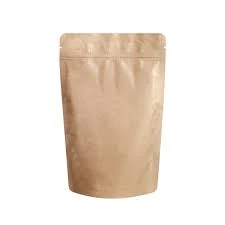what are gussets
Understanding Gussets Their Purpose and Applications
Gussets are structural components often used in engineering, architecture, and crafting to reinforce, stabilize, and connect elements within a framework. Though they may seem like simple, small pieces of material, their role is crucial in ensuring the integrity and strength of various constructions. In this article, we will explore what gussets are, their different types, and their applications across various fields.
What are Gussets?
A gusset is typically a triangular or trapezoidal piece of material, placed at the joint of two or more structural elements, such as beams, rafters, or frames. It serves to distribute stress and reduce the likelihood of material failure due to bending or torsion. Gussets can be made from various materials, including wood, metal, and plastic, depending on the application and required strength.
Importance of Gussets in Construction
In the construction industry, gussets play an essential role in creating stable structures. When beams or trusses are joined, there are often points of weakness where stress can accumulate. Gussets act as reinforcements at these critical joints, especially in bridges, rooftops, and load-bearing walls. By providing additional area for load distribution, gussets can effectively enhance a building's structural integrity and improve safety.
Gussets are also instrumental in shaping triangular configurations, which are among the strongest shapes in structural engineering. Triangles provide rigidity and stability, preventing deformation under load. This is why gussets are commonly used in the design of trusses and frames, helping to create a resilient framework that can withstand various forces, including wind and seismic activity.
Types of Gussets
Gussets can be categorized based on their shape, function, and material
1. Shape The most common shapes for gussets are triangular and trapezoidal. Triangular gussets are primarily used in truss design, while trapezoidal gussets are often used in larger structural applications where more surface area is needed for load distribution.
what are gussets

2. Function Gussets can serve multiple functions, such as tension gussets, which help handle pulling forces, and compression gussets, designed to manage pushing forces. Their specific design is tailored to the particular stresses they are expected to encounter.
3. Material The choice of material for a gusset determines its strength and suitability for different environments. Steel gussets are commonly used in heavy-duty applications because of their high tensile strength, while wood gussets are often found in residential construction due to their aesthetic appeal and ease of installation.
Applications of Gussets
Gussets are widely used across various fields
- Aerospace In aircraft design, gussets are critical for joining components of the airframe and wings. They ensure that the structure can withstand aerodynamic forces and maintain its integrity during flight.
- Automotive Engineering Gussets are utilized in the chassis of vehicles to improve strength and stiffness, especially in racing cars where performance is paramount. They help absorb and redistribute forces that occur during acceleration, braking, and cornering.
- Furniture Design In the realm of furniture making, gussets can be used to reinforce joints between different parts of a piece, such as tables and cabinets. They not only add strength but can also enhance the aesthetic appeal of the furniture.
- Sewing and Textiles In crafting, particularly in textile design, gussets can create additional space and shape in garments, such as underarms in shirts or in the crotch area of pants. This enhances comfort and mobility while maintaining the garment's structural integrity.
Conclusion
In summary, gussets are vital components in a variety of structures and applications. Their ability to enhance stability, distribute forces, and provide critical reinforcement makes them indispensable in construction, engineering, and design. Understanding the function and importance of gussets can help designers, engineers, and craftsmen create safer, more durable, and aesthetically pleasing structures and products. As technology and materials continue to evolve, the role of gussets will undoubtedly remain prominent in the pursuit of innovation and quality across industries.













